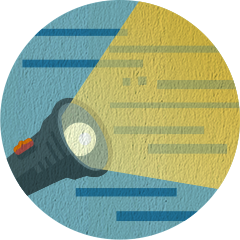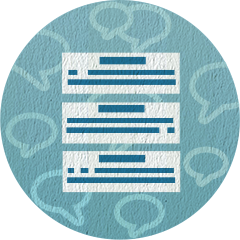What is the correlation between the following ETFs and how should that inform individual allocations of them in the fixed income allocation of a portfolio?
-
AGG, EMB, TIP, HYG, LQD, and MUB What would be the advantage of using only AGG versus a combination of AGG, HYG, and LQD.
-
Answer:
Let me answer your question by teaching you how to find the correlations yourself using Excel and finance.yahoo (please note that there are several tools such as Bloomberg which will do this for you, however anyone with a PC can find correlations between securities using only Excel and finance.yahoo): 1.) Go to finance.yahoo and pull up the first ticker 2.) Click historical prices 3.) Enter the historical dates you wish to use in your analysis 4.) Click "download to spreadsheet" Repeat these steps for all of these tickers Now in copy the prices for each of these tickers into a single Excel worksheet. You now should have a series of prices and dates for each ticker (note that all of the dates should be the same). You will now need to find the daily returns for each security (assuming you have daily prices), you can do this by simply using the function "=ln(T/T-1)" where "T" is the former (or most recent) price and "T-1" is the prior price (i.e. if your data starts on 1/1/2011 and ends on 6/26/2011, then T = 6/26/2011 and T-1 = 6/25/2011). Copy this function down the rows for all of the historical prices. Now you can find the correlation between each of these securities by using the =correl(return1,return2) function (where return1 = the column of returns for the first security and return is the column of returns for the second security). Do this for each of these securities to find the correlation between each of the securities. As a shortcut, you can find a correlation matrix of all of these securities by going into "Data Analysis"--> "Correlation"--> Highlight the columns where your data is located and then click on the cell where you want your correlation matrix to appear. This will give you the cross correlations for your entire data series. I thought I would include the =correl() function above in addition to the correlation matrix tool in case you ever want to simply find the correlation between two assets instead of using the matrix. Hope this helps!
Matt Caire at Quora Visit the source
Other answers
Depends highly on the time period in question. I actually prefer to look at risk/correlation in a market selloff scenario, as you really don't benefit from diversification in a broadly rising MKT. In a selloff environment, credit instruments typically behave more like stocks. EMB, HYG, LQD will probably wind up in 80% range w each other, w EMB HYG more volatile. TIP will prob b least correlated (say 0-0.25), MUB a bit higher (say 40% w agg.). The AGG already contains corporates so you could prob do best w AGG, MUB, TIP, EMB, HYG.
Brian Murphy
Related Q & A:
- What to put in a portfolio?Best solution by Yahoo! Answers
- How do you make a portfolio?Best solution by Yahoo! Answers
- What do I do to build a portfolio?Best solution by sitepoint.com
- How to make a portfolio?Best solution by Yahoo! Answers
- What is a Portfolio?Best solution by Yahoo! Answers
Just Added Q & A:
- How many active mobile subscribers are there in China?Best solution by Quora
- How to find the right vacation?Best solution by bookit.com
- How To Make Your Own Primer?Best solution by thekrazycouponlady.com
- How do you get the domain & range?Best solution by ChaCha
- How do you open pop up blockers?Best solution by Yahoo! Answers
For every problem there is a solution! Proved by Solucija.
-
Got an issue and looking for advice?

-
Ask Solucija to search every corner of the Web for help.

-
Get workable solutions and helpful tips in a moment.

Just ask Solucija about an issue you face and immediately get a list of ready solutions, answers and tips from other Internet users. We always provide the most suitable and complete answer to your question at the top, along with a few good alternatives below.